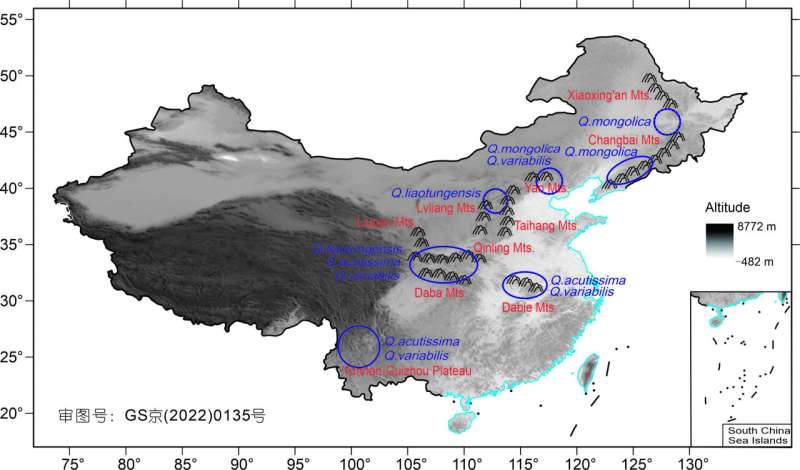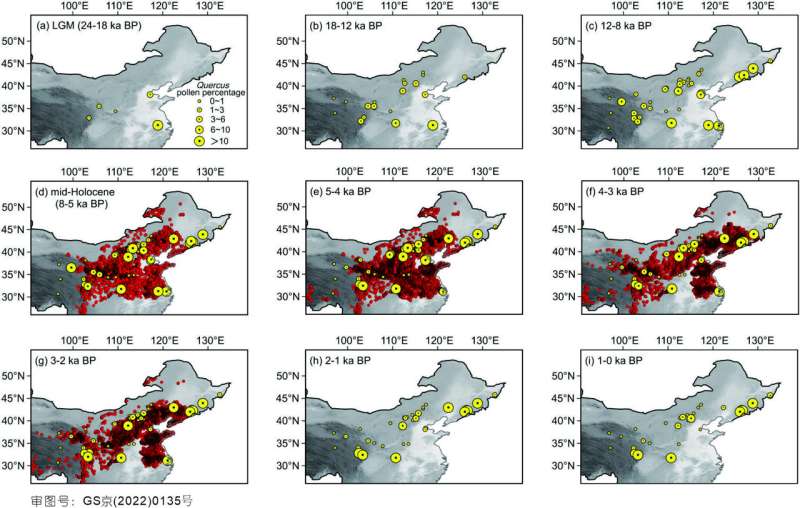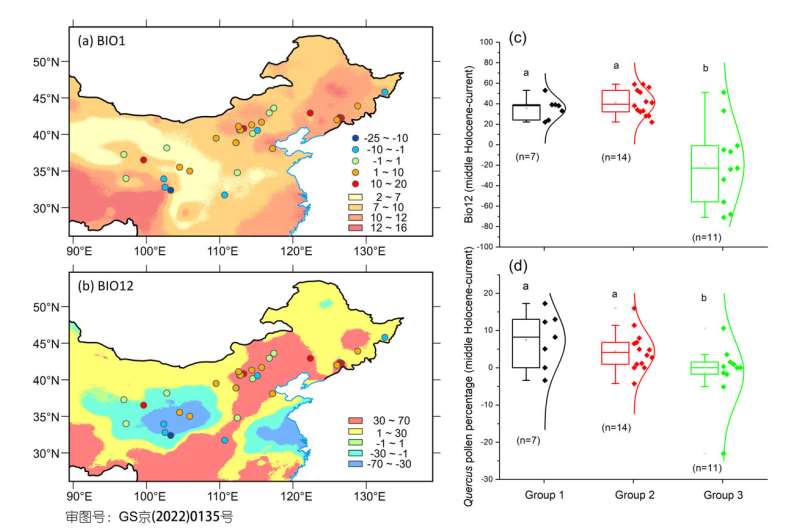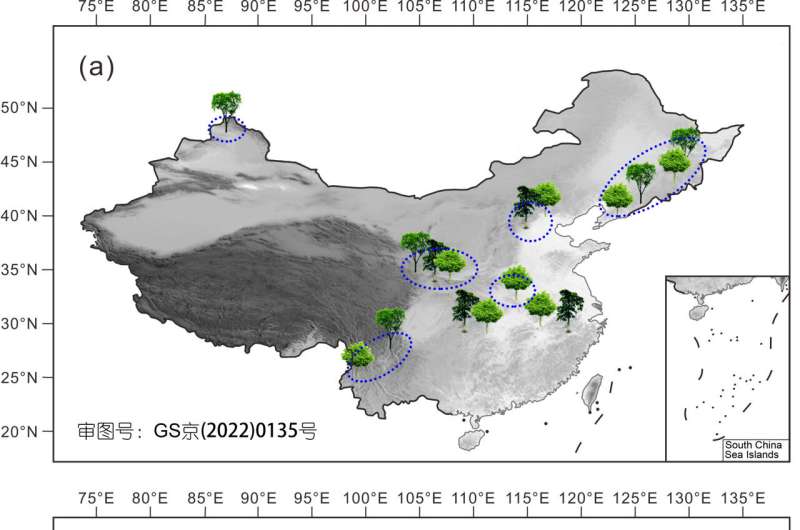This article has been reviewed according to Science X's editorial process and policies. Editors have highlighted the following attributes while ensuring the content's credibility:
fact-checked
peer-reviewed publication
trusted source
proofread
Mapping the LGM refugia of deciduous oak and its distribution

Forests have important roles in the global water and biogeochemical cycles. Climate change has led to worldwide changes in forest distributions, especially in the mid-latitude regions. As one of the most important forest genera, oak (Quercus), belonging to the Fagaceae, is widely distributed in the Northern Hemisphere.
Deciduous oak acts as an important forest constructive species in the mid-latitude regions and has important economic and ecological value. In the future, global warming and drought caused by greenhouse gas emissions will continue to increase, and human activities will be intensified. How the oak distributions will respond to climate change and human activities is an unaddressed important issue.
Research on long-term forest distributions can help us to better understand the future vegetation dynamics under climate change and human activities. In this study, we integrated different methods (i.e., paleoecology, phylogeography and species distribution models) to investigate the likely locations of glacial refugia and the postglacial development of the main deciduous oak species (i.e., Quercus variabilis, Q. mongolica, Q. dentata, Q. aliena, Q. acutissima and Q. liaotungensis).
The results indicated that mountains such as the Changbai, Qinling and Dabie Mountains acted as the refugia in northern and central China during the Last Glacial Maximum (LGM). The present Quercus in northern China could be the result of local dispersal during the postglacial period rather than only that of long-distance migration from south to north.

Climate was the main influencing factor for oak migration. The distribution range change was consistent with the Holocene climate changes, especially with the precipitation changes. Human activities did not show much influence on this widespread genus.
Archaeological studies have shown that archaeological sites were concentrated in central China during the mid-Holocene, and human activities then began to increase in northeastern China at approximately 4,000 cal yr BP, but they did not lead to decreased pollen percentages around this region.

In addition, most of the human-associated plant pollen taxa (i.e., Poaceae and Polygonaceae) and fossil charcoal both did not show significant relationships with Quercus dynamics. The topography acted as a buffer and made the mountains to act as refugia under a deteriorated climate.
Complex terrain could recombine precipitation, radiation, water vapor, and soil properties, which would form various local environments. As a result, these diverse habitat conditions can benefit the plant growth, and would help tree species to survive through unsuitable climate periods.
Compared with other main tree genera (e.g., Pinus and Betula), the refugia locations and migration routes of deciduous oak species were different because of their physiological differences. For example, the phylogeographical method did not detect long-distance migration from south to north of Betula platyphylla after the LGM but only detected local dispersal from the northern refugia since the genetic diversity indicated a north-to-south decline.

However, the deciduous oaks had a large distribution range during the LGM, and northward migration during the Holocene could be detected. The individual migration dynamics of these three genera need to be considered when modeling their dynamics and managing forest.
The work is published in Science China Earth Sciences.
More information: Qian Hao et al, The LGM refugia of deciduous oak and distribution development since the LGM in China, Science China Earth Sciences (2022). DOI: 10.1007/s11430-021-9981-9
Journal information: Science China Earth Sciences
Provided by Science China Press





















